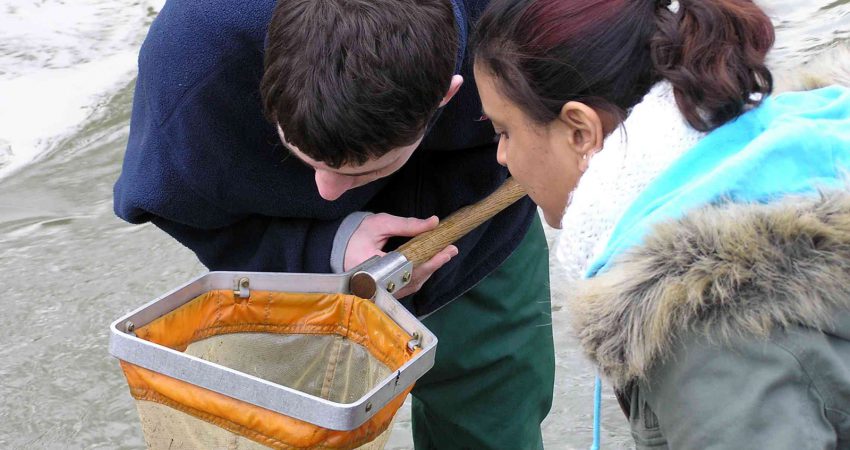
By Suzanne Perin - November 2015
PAPER CITATION
McClain, L. R., & Zimmerman, H. T. (2014). Prior experiences shaping family science conversations at a nature center. Science Education, 98(6), 1009–1032. doi:10.1002/sce.21134
To support learning across settings, educators need to develop ways to elicit student interests and prior experiences. McClain and Zimmerman describe how, during outdoor walks at a nature center, families talked about prior experiences with nature, which were mostly from non-school settings. They used the prior experiences to remind, prompt, explain to, and orient one another during shared meaning-making activity.
Research Design
McClain and Zimmerman set out to investigate the sources of prior experiences families referred to when they were making sense of observations in nature and how the families used these prior experiences in conversations about nature and science. The researchers’ objective was to learn which prior learning experiences people purposefully connected to their current observations in the natural environment.
The researchers observed 16 families consisting of at least one parent and one child. The children’s ages ranged from 3 to 15 years old. The families’ nature walks at a rural nature center were recorded on video; two researchers also took photographs and made field notes. The researchers then analyzed the families’ recorded conversations to uncover the sources and types of prior experiences the families talked about during their walks.
Research Findings
Working both from informal science literature and from their observations of the families, the researchers grouped the kinds and sources of prior experiences families referenced during their walks into seven categories:
- Everyday experiences came up most often. Parents referred to memories of everyday experiences more than the children. The memories typically involved the home, a family vacation, or a close relative’s home. For example, a stepfather and stepson related the jugs they saw hanging from trees to the maple syrup they put on buckwheat pancakes.
- Designed spaces, including places such as museums, zoos, science centers, and environmental centers, were sources of prior experiences. Children were more likely than their parents to mention such places as sources.
- Programs for science learning, such as camps, lectures, or scouting programs, were referenced in a quarter of the conversations, and were the second most common reference. Children were most likely to bring up such programs. The parents who referenced out-of-school programs were speaking with children age 5 or younger.
- Media, such as books, magazines, the internet, and television were mentioned as sources less frequently than the researchers expected, in only 10 percent of the conversations. One individual mentioned the internet as a source for a science idea; books were referenced most often. Parents often initiated media references.
- School was mentioned explicitly only once. The authors do not assert that school was not a source of knowledge, only that it was not a named source between the parents and children; the children in this study were also generally younger than school age, so school could be a more prominent resource for older children.
- The visit itself—references to something that happened earlier in the nature walk— was a source of memories that shows that learning took place throughout the walk. Parents and children were equally likely to contribute a recollection from earlier in their nature walk, but children were more likely to notice the same kind of plant or animal.
- Analogical connections asserted that something on the nature walk was like another object that was familiar to the family. These analogies were not always specifically scientific, but they leveraged everyday experiences. For example, one mother encouraged observation of a feature of a pine tree by saying it looked “furry … like a monster’s foot,” which made her five-year-old daughter laugh.
Families used these prior experiences in four identifiable ways:
- Family members connected previously shared experiences to the nature walk.
- They used prior experiences to explain and defend their current observations.
- Parents prompted a child to display expertise from a youth program.
- Children oriented the family to something on their walk associated with a memory from earlier in the walk.
Sharing memories linked a past experience to the present moment. Explaining ideas was a fully collaborative conversational practice.
Theoretical Basis
A sociocultural perspective on learning emphasizes social interactions, in which people learn both individually and as a collective unit. Relating prior experiences to new learning is part of a continuous process of constructing new meaning, one in which families use their experiences as resources, evidence, reasons for supporting a belief and other knowledge-building assets.
Implications for Practice
Informal science educators probably recognize the kinds of prior experiences noted in this study, but this paper makes more explicit how often these kinds of references occur and who in a family initiates a topic in conversation.
Efforts to elicit shared experiences and memories may be a useful strategy in family programs. Exploiting the roles that children and parents took up—that children related memories to their current place and that parents invoked and thereby validated children’s knowledge—is a tactic educators could use to support both children and adults in their learning in the outdoors.




